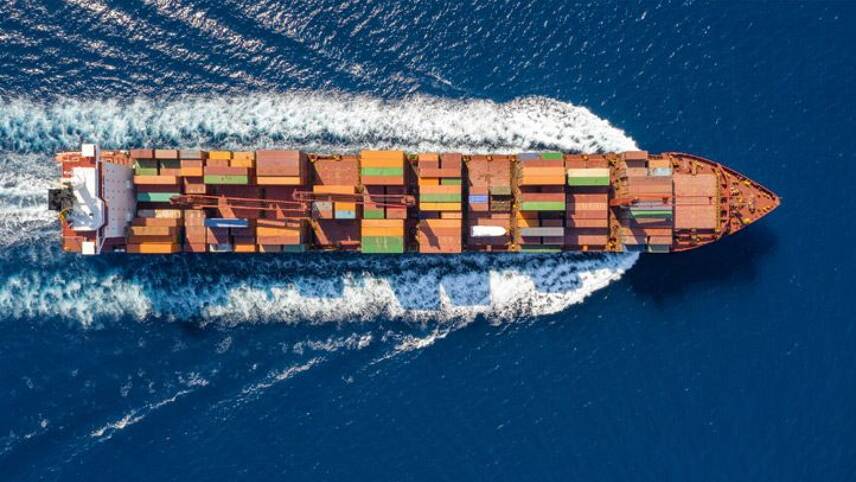Register for free and continue reading
Join our growing army of changemakers and get unlimited access to our premium content

From 1 January 2020, ships will only be allowed to use fuel oil with a very low sulphur content, under rules brought in by the International Maritime Organisation (IMO). This cut in sulphur content has been more than a decade in the planning, and almost all shipping around the world is expected to comply, or face penalties.
“Member states, the shipping industry and fuel oil suppliers have been working for the past three years to prepare for this major change – I am confident that the benefits will soon be felt and that implementation will be smooth,” said IMO secretary-general Kitack Lim. “This [is a] hugely important change which will have significant positive benefits for human health and the environment.”
he new regulations are aimed at cleaning up sulphur emissions, which can cause acid rain and other forms of air pollution, rather than tackling the climate emergency. However, the dirty forms of fuel that contain high levels of sulphur are usually higher carbon too, and the costs of cleaning up sulphur may spur shipping companies to become more efficient in their fuel use, which would cut greenhouse gas emissions directly.
Moving to cleaner fuels could add substantially to costs, from an estimated $400 (£303) a tonne for fuel oil today to as much as $600 a tonne, according to the International Chamber of Shipping. Higher shipping costs may be absorbed throughout the manufacturing and transport supply chains.
The cost impact may also spread beyond shipping, according to the energy analyst firm Wood Mackenzie. “Knock-on effects from the cap on sulphur emissions in marine bunker fuel could even wind up giving you a more expensive plane ticket in 2020,” the company said.
The IMO estimates that the new limit – of 0.5% sulphur content compared with the previous limit of 3.5%, enforced under the international convention for the prevention of pollution from ships – will cut sulphur oxide emissions from ships by 77%, an annual reduction of about 8.5m tonnes.
Fuel oil for shipping has long been one of the dirtiest forms of fossil fuel, made up of the sort of low-value and cheap crude oil that is unsuitable or expensive to refine into high-grade products such as petrol for cars, or kerosene for planes. Ship engines have been designed to cope with such low-grade fuel, and the emissions they belch out as a result mostly happen far from land, making the accompanying pollution less visible and, for many decades, largely ignored by governments.
But the damaging effects of the pollution have grown as globalisation has led to a massive increase in shipping transport. Shipping consumed about 3.8m tonnes of fuel oil a day in 2017, according to Wood Mackenzie, equivalent to half of global fuel oil demand. Carbon from shipping makes up about 3% of global total carbon emissions, but is expected to rise to 17% by mid-century. Fuel oil with a high sulphur content produces sulphur oxides, which can cause acid rain and particulate pollution.
Alternatives to low-grade, high-sulphur fuel oil are increasingly available, albeit at a higher price. Liquefied natural gas is still a fossil fuel, but much cleaner, and infrastructure allowing its use is becoming more widespread. Biofuels are also being explored as an alternative – one enterprising cruise company is using fish guts for its fuel – and there are high hopes for harnessing hydrogen fuels in the form of ammonia for ship engines.
Vessels can also be fitted with “scrubbers” to remove sulphur, though some of this is then released into the sea as effluent. Ports have also become increasingly concerned at the pollutants from cargo and passenger ships, and some operate zones where sulphur content is even more drastically reduced.
Shipping is subject to complex international regulation, overseen by the IMO, the London-based UN body. However, for historic reasons, it has been excluded from calculations of international greenhouse gas emissions, and thus exempted from governments’ obligations under UN climate agreements, including the landmark Paris accord of 2015.
That has meant shipping companies have felt less pressure to cut carbon, and progress on all forms of shipping pollution has been slow and often tortuous. The new sulphur regulations were first enacted by the IMO in 2008, after years of debate, but had to be re-confirmed in 2016 before finally coming into force on Wednesday.
Climate change campaigners want to see much faster adoption of regulations to cut greenhouse gas emissions from shipping. The next major public meeting will be an IMO conference in London in late March and early April, where countries will come under pressure to lay out a clear plan on cutting carbon from the sector, ahead of a major UN climate conference in Glasgow in November.
The IMO has a long-term aim to halve carbon from shipping by 2050, but few concrete plans to achieve it. An increasing number of countries, including the UK, are aiming for net-zero carbon emissions by 2050, in line with scientific warnings on the urgency of the climate emergency.
The ICS has also proposed a $2 a tonne levy on shipping fuels that would pay into a fund for research and development on zero-carbon forms of shipping, which will be explained to member states at the spring IMO conference, but could take years to come into force.
Fiona Harvey
This article first appeared on the Guardian
edie is part of the Guardian Environment Network


Please login or Register to leave a comment.